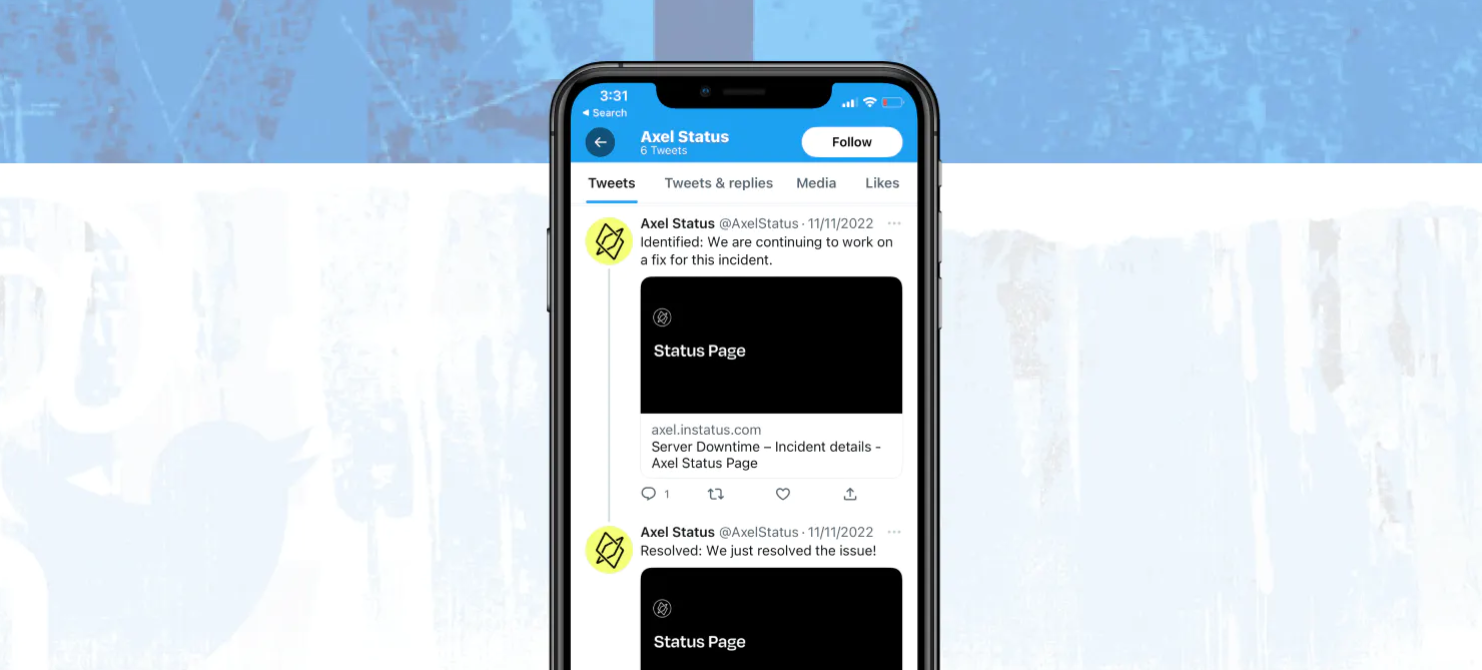DataOps vs. DevOps: Everything You Need To Know

DataOps and DevOps share many similarities—a focus on automation, cross-functional teams, a reliance on Agile methodologies… the list goes on.
There’s a good reason for this overlap. DataOps combines DevOps principles with data management best practices to enable the rapid deployment and optimization of business-critical data pipelines.
So, while the two share many similarities, there are also some key differences—and in this Instatus guide, we’ll be walking you through them. Here’s everything you need to know about the relationship between DataOps and DevOps.
What is DataOps?
DataOps is part development approach, part data engineering process, and part operations methodology.
It’s a practice of collaboration between the development, operations, and data teams to automate the delivery of data-driven applications that advance business goals. DataOps focuses on bringing together these three functions in order to increase agility, speed up time to market, and foster better communication among various stakeholders.
Principles of DataOps
The main principles of DataOps are:
- Collaboration: DataOps teams are cross-functional—including data scientists and software engineers.
- Automation: DataOps teams should strive to automate as much of the process as possible, including data pipelines, processing, and security protocols.
- Version Control: DataOps teams should use version control to ensure that changes made to the application are tracked and can be reverted if needed.
- Data Quality & Governance: DataOps teams should be aware of the importance of data quality and governance throughout their application lifecycle.
- Continuous Learning & Improvement: DataOps teams should constantly strive to learn and improve their processes in order to keep up with new developments within the industry or within a company.
Pros & Cons
Pros
- End-to-End Efficiency: DataOps enables teams to achieve end-to-end efficiency. By automating processes, data delivery is faster and more accurate, allowing teams to focus on value-added activities.
- Improved Collaboration: DataOps encourages collaboration between the data, development, and operations teams to create a unified approach to data-driven applications.
- Self-Service Data Marketplace: DataOps allows teams to create a self-service data marketplace where users can access and share clean, reliable data with ease.
Cons
- A Lack of Clarity Around What DataOps Entails: DataOps is a relatively new concept, and many teams lack clarity about what it entails. This can lead to confusion and miscommunications when trying to implement DataOps initiatives.
- High Investment in Technology: DataOps requires a high investment in technology, such as automation tools and monitoring solutions. This can be a barrier to entry for many organizations.
- A Lack of Data Fundamentals: DataOps requires a strong understanding of data fundamentals, such as data quality, governance, and security. Without this understanding, teams may struggle to implement DataOps initiatives effectively
What is DevOps?
We've written quite a bit about DevOps on the blog, but here's a quick refresher.DevOps is an approach to software development that emphasizes collaboration between the development (Dev) and operations (Ops) teams. It focuses on using automation tools to streamline processes, promote continuous integration and delivery, and increase agility.The result of DevOps (at its best) is an interconnected software stack that handles 90% of your busy work without the need for human intervention.
Take Instatus, for example—our status page builder integrates with a ton of monitoring tools and communication platforms. When issues occur, Instatus can automatically send notifications and update your status page, Slack channels, Intercom page, X feed, and more. This ensures that your support teams won’t be flooded with tickets and that your development teams can develop a solution without excess interruption.
Principles of DevOps
The main principles of DataOps are:
- Collaboration: DevOps teams should be cross-functional, including software engineers and ITOps personnel.
- Automation: DevOps teams should strive to automate as much of the process as possible, from development to deployment.
- Continuous Integration & Delivery: DevOps teams should use continuous integration and delivery tools to speed up the application development process.
- Version Control: DevOps teams should use version control to ensure that changes made to the software are tracked and can be reverted if needed.
- Monitoring & Observability: DevOps teams should use monitoring and observability tools like Instatus to gather insights into the performance of their applications in production.
Pros & Cons
Pros
- Faster Time to Market: DevOps helps teams get applications to market faster, as processes are automated and streamlined.
- Reduced Risk: By focusing on continuous integration and delivery, DevOps reduces the risk of errors during development and deployment.
- Improved Quality: Through automated testing, DevOps helps ensure higher-quality applications.
Cons
- Lack of Meaningful Metrics: Without the right metrics, it can be hard to track progress and measure success.
- Added Complexity: DevOps can add complexity to the application development process, as teams need to be familiar with a variety of tools and technologies.
- Unrealistic Goals & Expectations: DevOps can be difficult to implement, and teams may set unrealistic goals or expectations for the process. This can lead to frustration and delays.
4 Key Differences Between DataOps and DevOps
1. Meaning
The most obvious difference between DataOps and DevOps is meaning—these are two different (albeit related) concepts that have different goals.DataOps is concerned with using Agile methodologies and DevOps principles to streamline the data pipeline, while DevOps focuses on streamlining application development. In cases where application development requires input data, there’s bound to be overlap. But still, the main focus of DataOps is on data, and the main focus of DevOps is on applications.
2. Goals
The goals of DataOps and DevOps are also different from one another. The goal of DataOps is to create a streamlined data pipeline that allows the business to make smarter, more impactful decisions in less time. DevOps, on the other hand, focuses on automating the application development process to help speed up delivery times and create a more consistent product for end users.
3. Objectives & Success Metrics
And what about objectives? Those are different, too.
DataOps Objectives & Success Metrics
DataOps defines success through the speed, accuracy, and reliability of data flowing through the pipeline. That means benchmarking success against metrics like:
| Metric | Definition |
|---|---|
| Ingestion Speed | How quickly data is collected and brought into the pipeline |
| Storage Throughput | The rate at which data can be saved to storage systems |
| Retrieval Speed | How efficiently data can be accessed or fetched from storage |
| Data Error Rate | Frequency or percentage of errors encountered during data handling |
| Mean Time to Decision (MTTD) | Average time taken from receiving data to making a business decision |
| Source Quality Consistency | Consistency of data accuracy and reliability across data sources |
DevOps Objectives & Success Metrics
DevOps objectives are related to creating a better end-user experience—reducing manual errors in development processes, automating tasks, shortening delivery times, and making applications more reliable. Common success metrics include:
| Metric | Definition |
|---|---|
| Availability | The percentage of time a system is accessible to users—often tracked with tools like Instatus. |
| Mean Time To Repair (MTTR) | Average time required to fix and resolve issues or incidents once detected. |
| Mean Time To Detect (MTTD) | Average time required to identify that a problem or incident has occurred. |
| Deployment Frequency | The rate at which new code or changes are deployed to production environments. |
| Change Failure Rate | Percentage of deployments or changes that result in degraded service, failure, or rollbacks. |
| Time To Restore Service | Average time it takes to restore normal operations after an unplanned service disruption. |
| Customer Satisfaction Scores | Measures of user or customer satisfaction with the product, service, or deployment outcomes. |
4. Team Requirements
Both DataOps and DevOps require fairly specific team configurations in order to thrive.
DataOps Teams
DataOps teams are generally smaller than DevOps teams—only really requiring four roles to be filled:
| Roles | Responsibilities | Skills | Tools |
| Data Engineer | Creating and maintaining data lakes and warehouses | Databases, programming, and cloud infrastructure | SQL, Informatica, DataStage, SSIS, and Talend |
| Data Analyst | Visualizing and interpreting data | Programming, Statistics, ML, data cleaning, and data visualization | Excel, Looker, Tableau, Qlik View, and Altryx |
| Data Scientist | Creating algorithms & models | Data mining, ML, statistics, and programming | R, Python, SAS, and SPSS |
| DataOps Engineer | Designing and managing the data pipeline | DevOps, automation, cloud infrastructure, Agile, and process control | Python, shell scripts, and data test frameworks |
DataOps teams are most successful when they have a mix of technical and business knowledge.
DevOps Teams
DevOps teams benefit from cross-functional skill sets like software development, IT operations experience, quality assurance, testing, security compliance, and more. Usually, this means a larger team is required:
| Role | Responsibility | Key Skills | Common Tools |
|---|---|---|---|
| DevOps Evangelist | Drive adoption of DevOps culture and best practices | Agile, DevOps, leadership, communication | N/A |
| Release Manager | Plan, schedule, and oversee software releases | Release management, project coordination, CI/CD processes | Jira, Git, Jenkins, CircleCI |
| Automation Architect | Design and maintain automation strategies and frameworks | Scripting/programming, automation tools, infrastructure knowledge | Selenium, Appium, Puppet, Ansible |
| Experience Assurance Expert | Ensure software meets user experience expectations | UX design, QA/testing, analytics | A/B testing tools, user research tools |
| Software Developer & Tester | Write, test, and review code | Development best practices, test automation, debugging | Programming languages, test suites |
| Security & Compliance Engineer | Oversee product security and compliance with regulations | Security principles, regulatory standards, auditing | Security suites, compliance monitoring |
| Product Owner | Define product vision, roadmap, and priorities | Business analysis, product management, stakeholder engagement | Agile boards, product management tools |
| Utility Technology Specialist | Offer flexible technical support across domains | IT infrastructure, troubleshooting, operational support | Admin tools, monitoring & networking suites |
Want to learn more? Check out our guide to key DevOps roles.
Conclusion
DataOps and DevOps are two modern approaches to software development and delivery that are revolutionizing the way businesses deliver products. Each approach has its own set of roles, responsibilities, and technologies to ensure successful product delivery. At Instatus, we support DevOps and DataOps teams with beautiful, interactive status pages and powerful integrations—all fully operational in minutes, not hours. Monitoring your services and updating stakeholders has never been easier!Ready to get more out of your status page? Sign up for a free account today.
Get ready for downtime
Monitor your services
Fix incidents with your team
Share your status with customers


